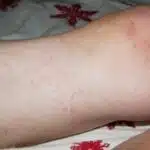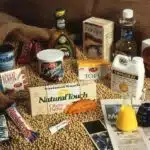As a laundry care expert, I have witnessed countless individuals struggle with common clothing stains that seem impossible to remove. From oily salad dressings to stubborn grass stains, certain blemishes can ruin a perfectly good outfit and leave you feeling frustrated. However, don’t throw in the towel just yet – there are effective ways to tackle these pesky stains and restore your garments to their former glory.
In this article, we will explore four of the most common clothing stains and provide tips on how to remove them effectively. Whether you’re dealing with ink marks on your favorite blouse or red wine spills on your white shirt, our expert advice will help you rid your clothes of pesky blemishes and keep them looking clean and fresh for longer. With our guidance, you can save money on costly replacements and extend the lifespan of your wardrobe while maintaining a polished appearance – an essential aspect of serving others in both personal and professional settings.
Tackling Oily Stains
Oily stains are one of the most common types of clothing stains that people encounter. These stains can be caused by a variety of sources, including greasy foods, makeup products, and oily skin. Fortunately, there are several ways to prevent these stains from occurring in the first place. For example, applying a stain repellent to your clothing can help to repel oil and other types of stains.
In addition to taking preventative measures, it is also important to use effective laundry detergents when dealing with oily stains. Look for detergents that are specifically designed to break down grease and oils, as these will be more effective at removing oily stains than standard detergents. Some laundry detergents even contain enzymes that target specific types of stains.
When washing clothes with oily stains, it is important to avoid using hot water, as this can actually set the stain in deeper. Instead, opt for cold or lukewarm water and use a pre-treatment solution before washing. By following these steps and using the right laundry care products, you can effectively tackle oily stains and keep your clothes looking their best. Moving on to another common type of stain – ink marks – let’s explore some effective ways to remove them from your clothing.
Removing Ink Marks
Tackling oily stains can be quite challenging, but removing ink marks from clothing can be even more frustrating. Ink stains are notorious for being stubborn and difficult to remove, especially if they have been left untreated for a long time. The key to successfully removing ink marks is to act quickly and use the right products.
Preventing ink stains is always better than having to remove them later. It’s a good idea to keep pens and markers away from your clothes, especially when you’re in a rush or not paying attention. Another way to prevent ink stains is to wear protective clothing, such as an apron or smock, when working with pens or markers.
If you do end up with an ink stain on your clothes, there are several products that can help remove it. Rubbing alcohol is one of the best products for removing ink marks, as it helps break down the pigment so it can be lifted from the fabric. Other effective products include vinegar, hair spray, and baking soda paste. Always test any product on a small area of the fabric first before applying it to the stain.
Transition: Now that we’ve covered how to remove ink stains from clothing, let’s move onto another common type of stain: grass stains.
Getting Rid Of Grass Stains
Picture yourself enjoying a sunny day outside, playing games with your friends, and suddenly you notice green stains on your clothes. These grass stains are often stubborn and can be challenging to remove if left untreated. However, with the right techniques, you can get rid of them easily.
When it comes to removing grass stains from clothes, natural remedies can come in handy. For instance, try using vinegar or lemon juice to pre-treat the stain before washing. Another natural remedy is baking soda mixed with water to form a paste that you can gently rub onto the affected area.
Before tossing your stained clothes into the washing machine, pre-treating techniques can help remove the stain effectively. One technique is using a laundry detergent that contains enzymes specifically designed for breaking down protein-based stains such as grass. Gently rubbing the fabric together before washing will also help loosen and remove dirt particles. With these simple techniques, you can banish those grass stains easily and have your clothes looking fresh once again!
Transitioning into banishing red wine stains: Now that we’ve tackled grass stains let’s move onto another common clothing stain – red wine.
Banishing Red Wine Stains
Red wine stains on clothing can be a nightmare to remove, and prevention is the best course of action. One way to prevent red wine stains is to use a stain-resistant fabric spray on your clothing before wearing it. This will create a barrier between the fabric and the wine, making it easier to clean up any spills.
If you do end up with a red wine stain on your clothing, act quickly. Blot as much of the excess liquid as possible using a clean cloth or paper towel. Avoid rubbing the stain, as this will only make it worse by pushing the wine further into the fabric. Then, apply one of the best wine stain removers such as white vinegar mixed with dish soap or hydrogen peroxide mixed with baking soda. Let the solution sit for several minutes before washing as usual.
Removing red wine stains from clothing can be a hassle, but with proper prevention and quick action, it doesn’t have to be a disaster. Keep these tips in mind next time you enjoy a glass of red wine at home or out with friends. In the next section, we will discuss tips for removing blood stains from clothing.
Tips For Blood Stains
Blood stains on clothing can be stubborn and difficult to remove. However, with the right tools and technique, it’s possible to tackle these stains effectively. It is important to treat the stain as soon as possible because dried blood is harder to remove.
One effective method for removing blood stains involves using a mixture of hydrogen peroxide and cold water. Simply mix equal parts of hydrogen peroxide and cold water and apply it directly to the stain. Let it sit for 5-10 minutes before rinsing with cold water. Repeat as necessary until the stain is gone.
Another option is to use salt and cold water. Mix a tablespoon of salt with two cups of cold water and soak the stained area in the solution for at least an hour before washing as usual. This method is particularly effective for fresh bloodstains.
In addition to these methods, it’s important to avoid hot water or heat when treating blood stains, as this can cause the stain to set permanently into the fabric. By following these tips, you can effectively remove blood stains from your clothing without causing any damage or discoloration.
Moving forward, if you’re dealing with sweat stains on your clothing, there are several effective methods for tackling those tough marks as well.
Dealing With Sweat Stains
Transition: Now that we have covered tips for removing blood stains, let’s move on to the next common stain problem – sweat stains.
Sweat stains are not only unsightly but they can also be challenging to remove. However, prevention is always better than cure. If you are prone to sweating, there are a few things you can do to prevent sweat stains from setting into your clothes. Firstly, try using an antiperspirant instead of just deodorant. Antiperspirants help reduce the amount of sweat your body produces. Secondly, wear loose-fitting clothing as tight clothes can make you feel hotter and cause more sweating. Lastly, avoid wearing synthetic fabrics as they trap heat and moisture, making you sweat more.
If you do end up with sweat stains on your clothes, don’t worry as there are ways to remove them. The best fabrics for sweat-prone individuals are those made from natural fibers such as cotton or linen. These materials allow air to circulate around your skin, keeping you cooler and reducing the amount of sweating. To remove sweat stains, pre-treat the area with a mixture of white vinegar and water before washing in hot water with an enzyme detergent.
In summary, preventing sweat stains is key by using antiperspirants, wearing loose-fitting clothing made from natural fibers like cotton or linen. If you do end up with sweat stains on your clothes though don’t panic! Simply pre-treat the area with a mixture of white vinegar and water before washing in hot water with an enzyme detergent. In the next section, we will cover how to remove makeup stains from clothing without damaging them.
Removing Makeup Stains
As laundry care experts, we understand that makeup stains are one of the most common stains found on clothing. These stains occur when makeup products such as foundation, lipstick, or eyeshadow come into contact with clothing fibers, leaving a stubborn mark that is hard to remove. However, there are effective ways to remove these stains without damaging your clothes.
When it comes to removing makeup stains, using a makeup remover alternative can be beneficial. Instead of using regular soap and water or bleach solutions, opting for an alternative like rubbing alcohol or vinegar can be more effective in breaking down the stain. These products can be applied directly to the stain and left for a few minutes before washing the item as usual.
Preventing makeup stains during application is also crucial in maintaining clean clothes. Simple steps like wearing a protective apron or covering your hair with a headband can prevent stray makeup from transferring onto your clothes. Additionally, being mindful of not touching your face while applying makeup and wiping off excess product with tissue paper can also help prevent stains.
By following these tips and tricks, you’ll be able to effectively remove any makeup stains from your clothing. In the next section, we’ll discuss how to say goodbye to coffee stains – another common stain that many people struggle with.
Say Goodbye To Coffee Stains
After learning how to remove makeup stains from clothing, let’s move on to another common stain type: coffee. It’s a fact that coffee stains can be notoriously difficult to remove, especially if they are not attended to immediately. Coffee contains tannins which can quickly set into fabrics and leave unsightly brown marks.
One way to prevent coffee stains is to switch up your morning beverage routine with some coffee alternatives like tea or hot chocolate. Another tip is to always use a lid when drinking coffee on the go, as this reduces the risk of spills and stains. But if you still find yourself with a coffee-stained shirt, there are ways to tackle the problem.
To begin with, blot the stain with a clean cloth or paper towel as soon as possible to remove any excess liquid. Then, soak the fabric in cold water for at least 30 minutes before washing it normally with detergent. If the stain persists after washing, try using a pre-treatment solution or applying white vinegar directly onto the stain before washing again. With these tips in mind, you can take action against stubborn coffee stains and keep your clothes looking fresh and clean.
Moving on from coffee stains, let’s explore another common type: chocolate stains. These can be particularly troublesome due to their oily nature and tendency to stick onto fabrics. However, there are effective methods for removing them that we will delve into next.
Getting Rid Of Chocolate Stains
Did you know that chocolate is one of the most common sources of stains on clothing? According to a survey conducted by a leading laundry detergent company, chocolate stains were found in more than 50% of households. This means that if you are a chocolate lover, there is a high chance that you have experienced the frustration of trying to remove chocolate stains from your clothes.
The good news is that removing chocolate stains is not impossible. The key is to act quickly and use the right techniques. If you happen to spill some chocolate on your clothes, start by scraping off any excess chocolate using a spoon or knife. Then, run cold water through the back of the stain for several minutes. Afterward, pre-treat the stain with a laundry detergent and wash it in the warmest water recommended for the fabric.
While accidents can happen, there are some tips for preventing chocolate stains altogether. One way is to avoid wearing light-colored clothing when eating chocolate treats. You can also use a napkin or paper towel to protect your clothes while eating. Additionally, washing your hands before handling clothing can prevent transferring any residue onto your garments.
As tempting as it may be to indulge in those best chocolate recipes without regard for potential spills, knowing how to remove and prevent chocolate stains will keep your clothes looking their best. In the next section, we’ll cover tips for removing ketchup stains from clothing.
Tips For Ketchup Stains
After successfully removing chocolate stains from your clothing, it’s important to be aware of other common stains like ketchup. Ketchup is a condiment that is enjoyed by many, but it can leave an unsightly stain on your clothes if not handled properly. The key to preventing ketchup stains is to be careful when using the condiment and avoid getting it on your clothing in the first place.
One way to prevent ketchup stains is to use a napkin or paper towel as a barrier between the condiment and your clothing. This will help absorb any excess ketchup and prevent it from seeping into the fabric. Another tip is to wear darker colored clothing when consuming ketchup-heavy meals, as stains are less noticeable on darker fabrics.
Beyond its traditional use as a condiment for food, ketchup actually has alternative uses that make it a versatile household item. For example, ketchup can be used as a cleaning agent for copper pots and pans due to the acidity in the tomatoes. It can also be used as a marinade for meats or added to stews for extra flavor. However, when it comes to clothing care, prevention is key when dealing with ketchup stains.
Transitioning into our next topic, mustard stains are another common issue that many people face when enjoying their favorite foods. Fortunately, there are effective methods for removing these types of stains from your clothes without damaging the fabric.
Removing Mustard Stains
Like a stubborn weed in a well-manicured garden, mustard stains are a nuisance that can ruin any piece of clothing. However, with proper care and immediate action, removing mustard stains can be a breeze. Mustard stain prevention is the key to not having to worry about removing them later. It’s best to avoid wearing light-colored clothing when eating mustard-based foods, as they tend to leave more visible stains.
If you find yourself with a mustard stain on your clothing, don’t panic. There are natural mustard stain removers that you may already have in your home. One solution is to mix equal parts white vinegar and water and apply it directly onto the stain before washing in cold water. Another solution is to make a paste of baking soda and water, apply it onto the stain, let it sit for 10-15 minutes, then wash the garment as usual.
By following these simple steps for mustard stain prevention and using natural remedies for removal, you can say goodbye to those pesky stains without damaging your clothes or spending money on expensive cleaning products. Next up: Say goodbye to grease stains with these easy tips!
Say Goodbye To Grease Stains
Removing oil stains from clothing can be a daunting task, as they tend to stick to the fabric and refuse to budge. However, with the right approach and tools, you can say goodbye to those stubborn grease stains for good. The first step in removing oil stains is to blot up any excess grease with a clean cloth or paper towel. Avoid rubbing the stain, as this will only push the oil deeper into the fibers of your clothing.
Next, apply a pre-treatment solution directly onto the stain and let it sit for at least 10 minutes before washing. You can make your own pre-treatment solution by mixing equal parts white vinegar and baking soda together until it forms a paste-like consistency. Alternatively, you can use a store-bought pre-treatment product.
Once you have applied the pre-treatment solution, wash your clothing in hot water using your regular laundry detergent. If the stain is particularly stubborn, consider adding an enzyme-based cleaner to your wash cycle. This will help break down the oils and remove them from your clothing.
To prevent future oil stains from ruining your clothes, try applying a protective spray or coating onto them before wearing. Additionally, avoid using too much fabric softener when washing your clothes, as this can create a barrier that prevents laundry detergent from fully penetrating and cleaning your garments.
- Use dish soap: Dish soap is great at breaking down grease and oil stains.
- Try cornstarch: Cornstarch can absorb excess oils before they set into fabrics.
- Apply rubbing alcohol: Rubbing alcohol works well on fresh grease stains.
- Use baby powder: Baby powder is perfect for removing oily stains on delicate fabrics.
- Apply talcum powder: Talcum powder works similarly to baby powder and is great for absorbing excess oils.
Now that you know how to remove pesky oil stains from your clothes let’s move on to getting rid of rust stains without damaging your garments or household items.
Getting Rid Of Rust Stains
After successfully removing grease stains from your clothes, it’s time to tackle another common clothing stain – rust. Rust stains can be caused by various sources such as metal objects or hard water. These reddish-brown stains can be tough to remove but there are ways to do it.
Home remedies can come in handy when trying to get rid of rust stains. One of the most effective solutions is using lemon juice and salt. Simply apply a mixture of lemon juice and salt onto the stain and let it sit for a few hours before washing it off. Another solution is using white vinegar and baking soda. Mix these two ingredients to form a paste and spread it onto the stain, then wash it off after an hour. If these remedies don’t work, you may need to seek professional stain removal services.
Professional stain removal services have access to advanced techniques and equipment that can effectively remove rust stains from your clothes without damaging them. They also have trained professionals with experience in dealing with different types of fabrics. However, this option may not be necessary for minor stains as home remedies can usually do the trick.
Removing rust stains from your clothes can be challenging but with the right approach, you can restore your clothes back to their original state. Whether you choose to use home remedies or seek professional help, remember to act fast before the stain sets in. In the next section, we’ll discuss some tips for getting rid of lipstick stains on your clothes.
Tips For Lipstick Stains
Imagine looking in the mirror and seeing a bright, bold shade of lipstick smeared across your face. While this may be a desired look for some, it can quickly become a nightmare when that same lipstick ends up on your clothing. Lipstick is one of the most common stains found on clothing, especially when applying makeup before getting dressed. However, with the right techniques and knowledge, removing these pesky stains can become a breeze.
Lipstick removal techniques vary depending on the fabric type and severity of the stain. One option is to use rubbing alcohol or hairspray on the affected area before washing. Another method involves using dish soap or laundry detergent to pre-treat the stain before washing normally. For tougher stains or delicate fabrics, seeking professional dry cleaning services may be necessary.
To prevent lipstick stains from happening in the first place, there are several tips to keep in mind. When applying makeup, try using lip liner or blotting excess product onto a tissue to avoid smudging onto clothing. Additionally, waiting for lipstick to fully dry before getting dressed can help prevent transfer onto fabric.
Remembering these tips and tricks can save both time and money when dealing with stubborn lipstick stains on clothing. Whether it’s using rubbing alcohol or simply waiting for lipstick to dry before getting dressed, preventing and removing these pesky marks can become second nature with practice.
Transition: Now that we’ve discussed how to tackle lipstick stains on clothing let’s move on to another common issue – banishing sweat stains from workout clothes.
Banishing Sweat Stains From Workout Clothes
Lipstick stains are quite commonplace and can be challenging to remove from clothing. If you’ve been scouring the internet for a solution, fret no more! The good news is that there are several effective methods available to help you banish lipstick stains for good.
Now, let’s talk about another common clothing stain: sweat. Sweat stains on workout clothes can be unsightly, especially if they’re visible in the underarm area. But don’t worry; there are ways to prevent sweat stains and remove any unpleasant odors that may linger after a workout.
Preventing sweat stains is all about taking proactive measures. First and foremost, make sure that you’re wearing breathable fabrics when working out. This will allow air to circulate and keep sweat from building up in one place. Additionally, consider using an antiperspirant or deodorant specifically formulated for sportswear. These products can help reduce excessive sweating while minimizing odor.
| Type of Fabric | Best Cleaning Method | Tips |
|---|---|---|
| Cotton | Use hot water and detergent | Pre-treat with a stain remover before washing |
| Synthetic Fabrics (e.g., polyester) | Wash with cold water and mild detergent | Avoid using fabric softeners as they can trap odors |
| Wool | Dry clean only or hand wash with cold water | Use a wool-specific detergent |
Removing sweat odor requires some additional steps beyond just washing your clothes. One option is to add 1/2 cup of baking soda to your laundry load during the wash cycle. This will help neutralize any lingering odors. Another trick is to soak your clothes in a mixture of one part vinegar to four parts water before washing them normally.
Overall, preventing sweat stains and removing odor from workout clothes is achievable with a little bit of effort and attention to detail. By following these tips, you’ll be able to keep your activewear looking fresh and smelling clean.
Conclusion
As a laundry care expert, it is important to be equipped with the knowledge of how to remove various types of stains from clothing. Oily stains, ink marks, grass stains and red wine stains are some of the most common and stubborn stains that can ruin your favorite outfit. However, with the right techniques and products, these stains can be effectively removed.
We have discussed some easy-to-follow tips for removing different types of stains from clothes. It is important to remember that treating the stain as soon as possible increases your chances of success in removing it completely. By following these tips, you will be able to restore your clothes to their former glory and extend their lifespan.
In conclusion, as the saying goes, “a stitch in time saves nine”. This means that taking prompt action when dealing with a stain can prevent further damage and save you a lot of time and effort later on. So remember to tackle any stain on your clothes as soon as you notice it using the appropriate method for that type of stain. With these tips at hand, you can confidently say goodbye to stubborn clothing stains!
Image Credits
- “Clothes stained with sweet persimmons” by funcrush28 (featured)





























